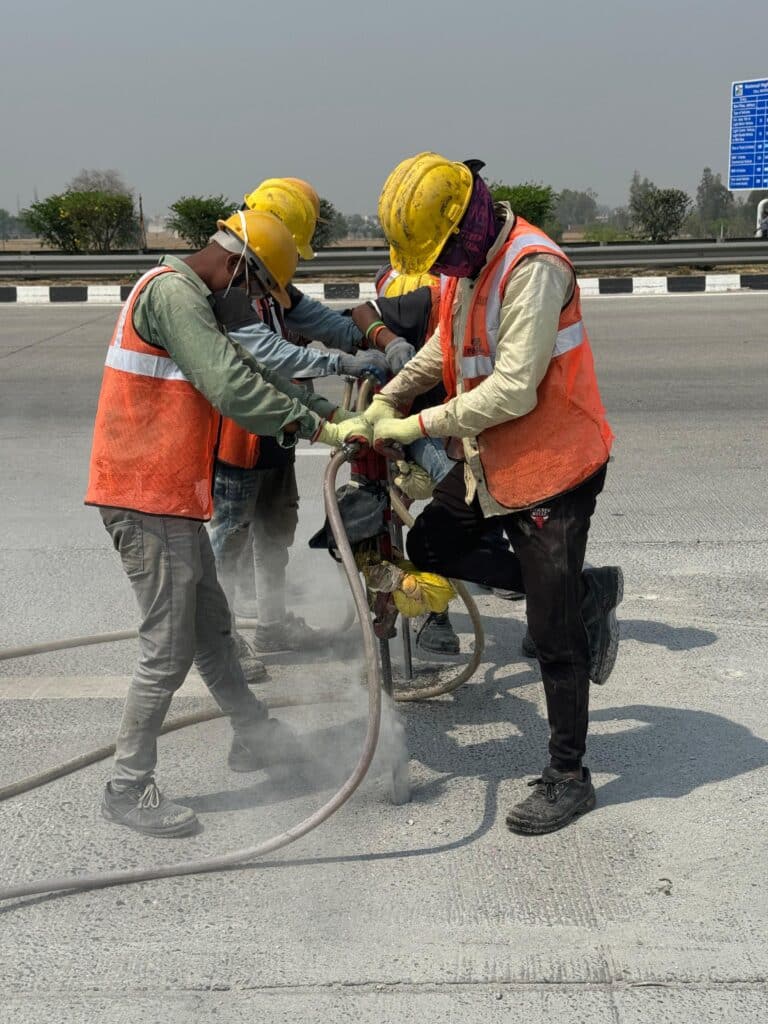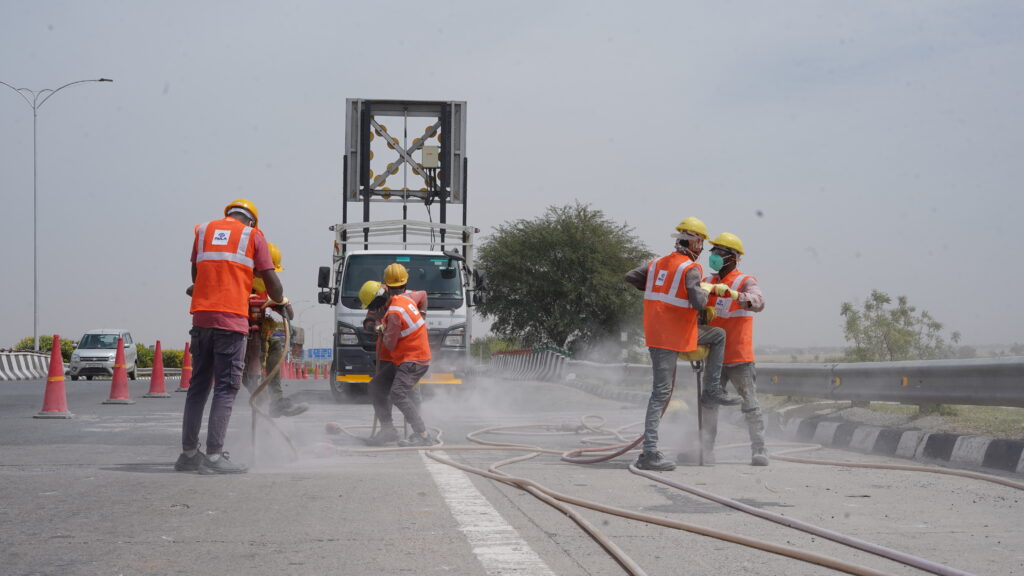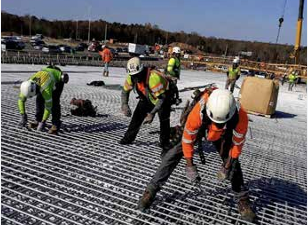Our Services
Repair of Concrete Pavements
Repair of Concrete Pavements (Rigid Pavements)
Concrete or Rigid pavements are built to withstand heavy loads and constant wear. But over time, settlement, cracking, joint failure, and surface distress can compromise both safety and performance.
NVLN Constructions provides specialized repair and rehabilitation solutions for rigid pavements, from void filling and slab lifting to crack sealing and advanced stitching techniques, all executed with precision engineering, advanced grouting systems, and compliance with relevant codes and standards.


- Void Filling beneath PQC Panels
- Cross-Stitching
- Crack Sealing
- Joint and Crack Resealing
- Stapling
- Slot Stitching
- Slab Lifting or Slab Jacking
Voids under Pavement Quality Concrete (PQC) slabs often result from subgrade erosion, poor drainage, or water infiltration which can lead to slab rocking, cracks, and premature failures. We employ precision pressure grouting techniques to restore slab support, re-establish load transfer, and extend pavement life — all without the need for full slab replacement.
Cross-Stitching is an effective method to stabilize longitudinal cracks and joints. It involves drilling and anchoring diagonal steel dowels across cracks to bind separated slabs together. This technique improves load distribution, reduces differential slab movement, and enhances ride quality.
Even minor cracks can accelerate deterioration by allowing water, debris, and chemicals into the pavement system. We use high-performance flexible sealants create a watertight barrier while accommodating slab movement — preventing crack propagation and preserving structural integrity.
Over time, pavements’ joints lose elasticity, inviting water and debris infiltration. Our joint and crack resealing process involves cleaning, preparing, and resealing joints using advanced sealant that restore watertightness and flexibility. This reduces faulting, pumping, and spalling at joints — protecting pavements from premature distress and failure.
Stapling reinforces cracked or weakened slabs by embedding steel staples across crack lines. This method holds slabs tightly together and controls further separation — ideal for transverse cracks or localized slab breaks.
Slot-Stitching — designed to reinforce longitudinal cracks and failed joints — involves cutting slots along the crack and inserting tie bars bonded with high-strength grout. This technique re-establishes load transfer, reduces faulting, prevents crack widening and improved load-bearing capacity.
Uneven or settled slabs can lead to unsafe riding conditions. Our slab jacking process uses controlled pressure grouting techniques to lift and realign slabs back to their original position, which eliminates rocking, restores smooth riding surfaces, and prevents further structural damage.
NVLN Construction’s advance pavement repair techniques restore structural performance and maximize structures’ lifecycle value.
Void Filling beneath PQC Panels
Voids under Pavement Quality Concrete (PQC) slabs often result from subgrade erosion, poor drainage, or water infiltration which can lead to slab rocking, cracks, and premature failures. We employ precision pressure grouting techniques to restore slab support, re-establish load transfer, and extend pavement life — all without the need for full slab replacement.



Cross-Stitching
Cross-Stitching is an effective method to stabilize longitudinal cracks and joints. It involves drilling and anchoring diagonal steel dowels across cracks to bind separated slabs together. This technique improves load distribution, reduces differential slab movement, and enhances ride quality.



Crack Sealing
Even minor cracks can accelerate deterioration by allowing water, debris, and chemicals into the pavement system. We use high-performance flexible sealants create a watertight barrier while accommodating slab movement — preventing crack propagation and preserving structural integrity.



Joint and Crack Resealing
Over time, pavements’ joints lose elasticity, inviting water and debris infiltration. Our joint and crack resealing process involves cleaning, preparing, and resealing joints using advanced sealant that restore watertightness and flexibility. This reduces faulting, pumping, and spalling at joints — protecting pavements from premature distress and failure.



Stapling
Stapling reinforces cracked or weakened slabs by embedding steel staples across crack lines. This method holds slabs tightly together and controls further separation — ideal for transverse cracks or localized slab breaks.



Slot Stitching
Slot-Stitching — designed to reinforce longitudinal cracks and failed joints — involves cutting slots along the crack and inserting tie bars bonded with high-strength grout. This technique re-establishes load transfer, reduces faulting, prevents crack widening and improved load-bearing capacity.



Slab Lifting or Slab Jacking
Uneven or settled slabs can lead to unsafe riding conditions. Our slab jacking process uses controlled pressure grouting techniques to lift and realign slabs back to their original position, which eliminates rocking, restores smooth riding surfaces, and prevents further structural damage.



NVLN Construction’s advance pavement repair techniques restore structural performance and maximize structures’ lifecycle value.


